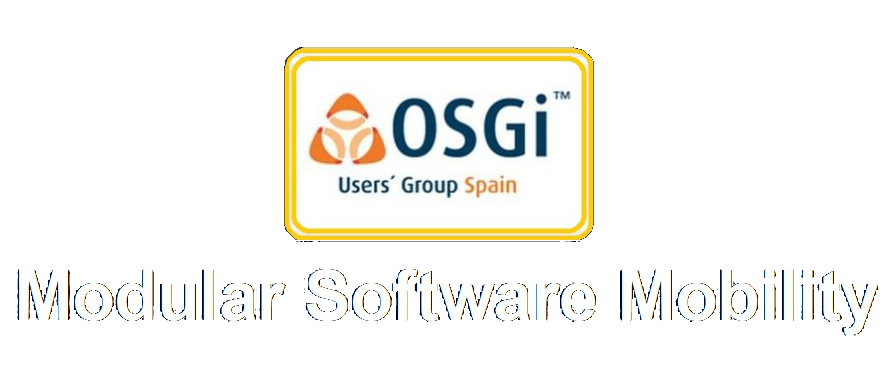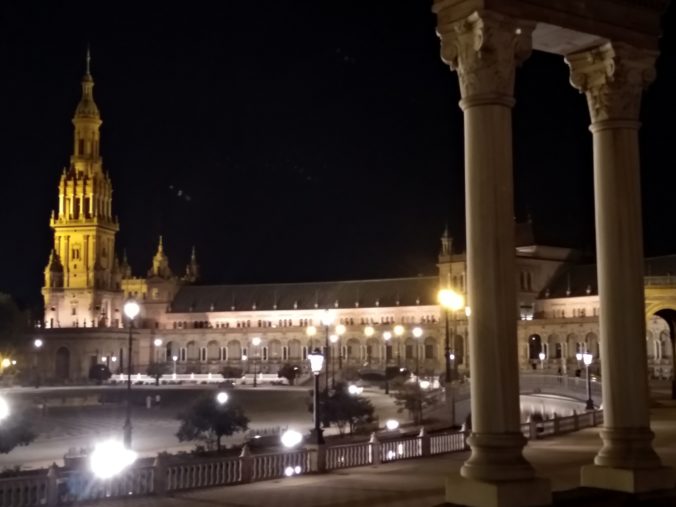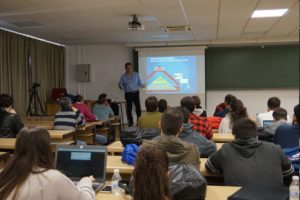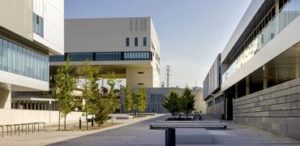
Photo: EarthCARE. ESA.
Recently, on the occasion of the OSGi Community 2018 event in Ludwigsburg, an interview with the software engineer Tony Walsh was published. In it, under the title “Flying to Jupiter with OSGi“, Tony Walsh addresses the adoption of OSGi by the European Space Agency (ESA).
Unexpectedly, the title of this interview, and the words of the Indian polymath Jagadish Chandra Bose, bring to our mind the last book of the writer José María Sánchez-Ros.
“The poet is intimate with truth, while the scientist approaches awkwardly“
– Jagadish Chandra Bose –
Beyond Orion
A short fiction story inspired by the technology and titled “Beyond Orion” has led us to approach José María Sanchez-Ros and deepen into his work. He surprised us in the writing and the content of his work.
His first book, “The unusual journey of the Samurai Hasekura” (” El insólito viaje del Samurai Hasekura“) , addresses a fact that could have influenced the evolution of history; the arrival to the city of Seville, in the year 1614, of a Japanese embassy led by the Samurai Hasekura. The second, “The spy of Avignon” (“El espía de Aviñon”) , includes, distributed among others, a series of stories of technological inspiration. Analyzed as a whole, they seem to reflect different perspectives of another unusual journey in the current century. “Beyond Orion” , is a short fiction story in this second book. An end-user, the main character of the story, himself, is surpassed by a technology that does not address the community needs.
Interview (Spanish)
P1: “El Espía de Aviñón” se presenta en Junio de 2018 en el Ateneo de Sevilla, asociación cultural conocida particularmente por las reuniones de escritores e intelectuales de la Generación del 27. ¿Se considera usted influenciado de alguna manera por la innovación que caracterizó a la Generación del 27?
R: Me gustaría pensar que sí, aunque pudiera parecer pretencioso por mi parte. Era una generación brillante, una segunda época dorada en nuestra literatura con aires de renovación, de profunda influencia europea y americana. Fue un soplo de aire fresco truncado por el desastre de nuestra guerra civil.
P2: Sin una necesidad en publicar, frecuentemente reconoce que tampoco espera gran beneficio económico de esta actividad. Sin embargo, tras leer sus libros es fácil intuir la gran dedicación detrás de ellos. ¿Qué es lo que le motiva a escribir?
R: Supongo que es la necesidad de contar una historia. Es un impulso natural de dialogar con uno mismo. Con la escritura uno puede enfrentarse a sus miedos, buscar un poco de sosiego y, seguramente también, aprender de ese juego de espejos que es la ficción y la realidad. La ficción aunque nunca puede superar a la realidad, sí logra captar un destello que puede emocionar. Eso por lo menos es lo que intento.
P3: Algunos de sus relatos parecen transmitir inquietudes coincidentes con otros autores ante los grandes retos a los que se enfrenta la sociedad actual. Sorprende el hecho de llegar a esta coincidencia desde una perspectiva histórica y analítica, como en el caso del historiador Israli, Yuval Noah Harari, y desde sentimientos más personales manifestados a través de relatos que combinan lo real y lo ficticio. ¿Conocía a este autor antes de la elaboración de sus relatos?
R: No lo conocía. Para mí ha sido un descubrimiento. Lo he leído después de haber escrito mis relatos de ciencia ficción. El historiador israelí va muchos más lejos y hace un brillante análisis de la historia de la humanidad. Coincido con él en la preocupación de la vertiginosa evolución de las nuevas tecnologías y la necesidad de una reposada reflexión.
P4: La relación entre los humanos y la nueva generación de máquinas/software es un tema que aparece cada vez más frecuentemente en foros científicos relacionados con la computación. El científico y también escritor David Brin identifica la empatía como una gran debilidad humana en esta interacción, por la facilidad en simularla sin que responda a algo existente. Su relato, “Corazón de Silicio“, parece abordar esta misma cuestión.
R: Creo que la empatía es el rasgo más diferenciador de nuestra especie. Me cuesta trabajo pensar que las máquinas puedan sentir emoción por algo. Podrán aparentar esa emoción, pero nunca será sincera. Da una cierta desazón que en un futuro sea difícil distinguir un hombre de una máquina, pero siempre nos queda la mirada y allí siempre se percibirá la inigualable emoción que brota del corazón humano.
P5: En otro de sus relatos, en esta ocasión no relacionado con la tecnología, “El imperturbable” introduce el debate sentimiento-razón, concluyendo que la ausencia del primero lleva a la indiferencia ante la vida. Curiosamente, incluso en las plantas, se ha identificado una sensibilidad más allá de lo que imaginábamos. Parece tener un papel importante, no solo en la vida, sino en su evolución.
R: Sí, es evidente no somos sólo seres pensantes sino también seres que sienten, que deambulan en ese espacio equidistante del amor y el odio. La vida es pura emoción, si nos quitaran la capacidad de amar la vida carecería de sentido.
P6: Las redes sociales permitan alcanzar un gran número de personas, mucho mayor que el número de Dunbar, representando el limite de relaciones sociales estables en los humanos y relacionado con su capacidad cerebral. “Algunas veces soy un uno y otras solo un cero”, finaliza el protagonista de uno de sus relatos, tras fusionarse con la red como única salida, y tras una serie de conflictos sociales. Aunque pudiera parecerle sorprendente , algunos actores del mundo tecnológico sugieren la necesidad de una mayor integración o incluso de una fusión con la nueva generación de tecnologías.
R: Las redes sociales siempre han existido. ¿Acaso no han desarrollado el mismo papel las distintas religiones, los nacionalismos, la masonería y los movimientos asociativos como pueden ser desde un club de fútbol hasta una asociación de ajedrez? Lo que ocurre es que con las nuevas tecnologías las redes sociales han evolucionado y se han hecho más potentes y con una capacidad de influencia muy destacada. Las falsas noticias y las campañas malintencionadas han provocado graves problemas como el Brexit, el auge de los populismos y crecimiento de la xenofobia y el nacionalismo. Las redes sociales cibernéticas se han prestado a ello. Es necesario que reflexionemos sobre ello y que se establezca una regulación que nos ponga a resguardos de estos desajustes. Es un contrasentido que Internet que es por antonomasia un instrumento universal que elimina las fronteras sirva para levantar muros de recelo y de miedo. Hay que estar atentos a estos fenómenos y del mismo modo que se regula y se vigila el tráfico en las carreteras habrá que estar pendiente de lo que se dice y hace en las redes sociales. Esta intervención es totalmente necesaria para garantizar la libertad de todos y que nadie pueda ampararse en el anonimato para delinquir o desestabilizar un país.
P7: ¿Estamos generando más problemas que soluciones, con un potencial a nuestra disposición sin precedentes?
R: Yo creo que no hay que crear alarmas innecesarias. Nos iremos adaptando a las nuevas tecnologías. Sólo tenemos que ser conscientes de que los avances del hombre aumentan la calidad de vida y la posibilidad de conocimiento. Pero esto no puede significar desconocer los riesgos. Es necesario que protejamos nuestra intimidad, y por tanto nuestra libertad personal, con una regulación internacional. También como decía habrá que estar atentos a las mentiras y a las manipulaciones malintencionadas que puedan producirse en la red.







Recent Comments